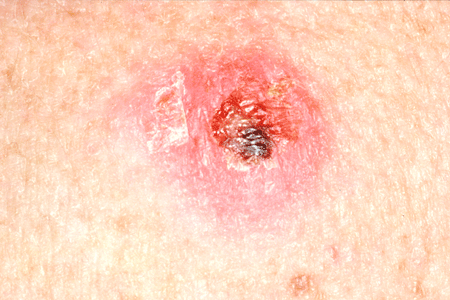 The presence of fever, rash, and headache is particularly characteristic of dengue. Other signs of dengue fever include bleeding gums, severe pain behind the eyes, and red palms and soles.
The presence of fever, rash, and headache is particularly characteristic of dengue. Other signs of dengue fever include bleeding gums, severe pain behind the eyes, and red palms and soles.
Dengue fever is a disease caused by a family of viruses that are transmitted by mosquitoes. It is an acute illness of sudden onset that usually follows a benign course with symptoms such as headache, fever, exhaustion, severe muscle and joint pain, swollen glands (lymphadenopathy), and rash. The presence of fever, rash, and headache is particularly characteristic of dengue. Other signs of dengue fever include bleeding gums, severe pain behind the eyes, and red palms and soles. Dengue strikes people with low levels of immunity. because it is caused by one of four serotypes of virus, it is possible to get dengue fever multiple times. however, an attack of dengue produces immunity for a lifetime to that particular serotype to which the patient was exposed.
Dengue goes by other names, including breakbone or dandy fever. Victims of dengue often have contortions due to the intense joint and muscle pain, hence the name breakbone fever. Slaves in the West Indies who contracted dengue, were said to have dandy fever because of their postures and gait.Dengue haemorrhagic fever is a more severe form of the viral illness. Manifestations i nclude headache, fever, rash, and evidence of haemorrhage in the body. Petechiae (small red or purple blisters under the skin), bleeding in the nose or gums, black stools, or easy bruising are all possible signs of haemorrhage. this form of dengue fever can be life-threatening and can progress to the most severe form of the illness, dengue shock syndrome.
What areas are at high risk for contracting dengue fever?Dengue is prevalent throughout the tropics and subtropics. Outbreaks have occurred recently in the Caribbean, including Puerto Rico, the US Virgin Islands, Cuba, and Central America. Cases have also been imported via tourists returning from areas with widespread dengue, including Tahiti, Singapore, the South Pacific, Southeast Asia, the West Indies, India, and the Middle East (similar in distribution to the areas of the world that harbour malaria and yellow fever). Dengue fever is common, and statistics show it may be increasing in Southeast Asia. Thailand, Vietnam, Singapore, and Malaysia have all reported an increase in cases. nearly 40 per cent of the world’s population lives in an area endemic with dengue.How is dengue fever contracted?The virus is contracted from the bite of a striped Aedes aegypti mosquito that has previously bitten an infected person. The mosquito flourishes during rainy seasons, but can breed in water-filled flower pots, plastic bags, and cans year-round. one mosquito bite can inflict the disease. The virus is not contagious and cannot be spread directly from person to person. there must be a person-to-mosquito-to-another-person pathway.What are dengue fever symptoms and signs?After being bitten by a mosquito carrying the virus, the incubation period ranges from three to 15 days before the signs and symptoms of dengue appear. Dengue starts with chills, headache, pain upon moving the eyes, and low backache. Painful aching in the legs and joints occurs during the first hours of illness. The temperature rises quickly as high as 104 F (40 C), with relative low heart rate (bradycardia) and low blood pressure (hypotension). The eyes become reddened.
A flushing or pale pink rash comes over the face and then disappears. The glands (lymph nodes) in the neck and groin are often swollen. Fever and other signs of dengue last for two to four days, followed by a rapid drop in body temperature (defervescence) with profuse sweating. this precedes a period with normal temperature and a sense of well-being that lasts about a day. a second rapid rise in temperature follows. a characteristic rash appears along with the fever, and spreads from the extremities to cover the entire body except the face. The palms and soles may be bright red and swollen.What is the treatment for dengue fever?Because dengue fever is caused by a virus, there is no specific medicine or antibiotic to treat it. For typical dengue, the treatment is purely concerned with relief of the symptoms (symptomatic). Rest and fluid intake for adequate hydration is important. Aspirin and nonsteroidal anti-inflammatory drugs should only be taken under a doctor’s supervision because of the possibility of worsening haemorrhagic complications. Acetaminophen (Tylenol) and codeine may be given for severe headache and for the joint and muscle pain (myalgia). there is currently no vaccine available for dengue fever.If you suspect that you may have contracted the disease, seek medical help immediately. (MedicineNet.com)